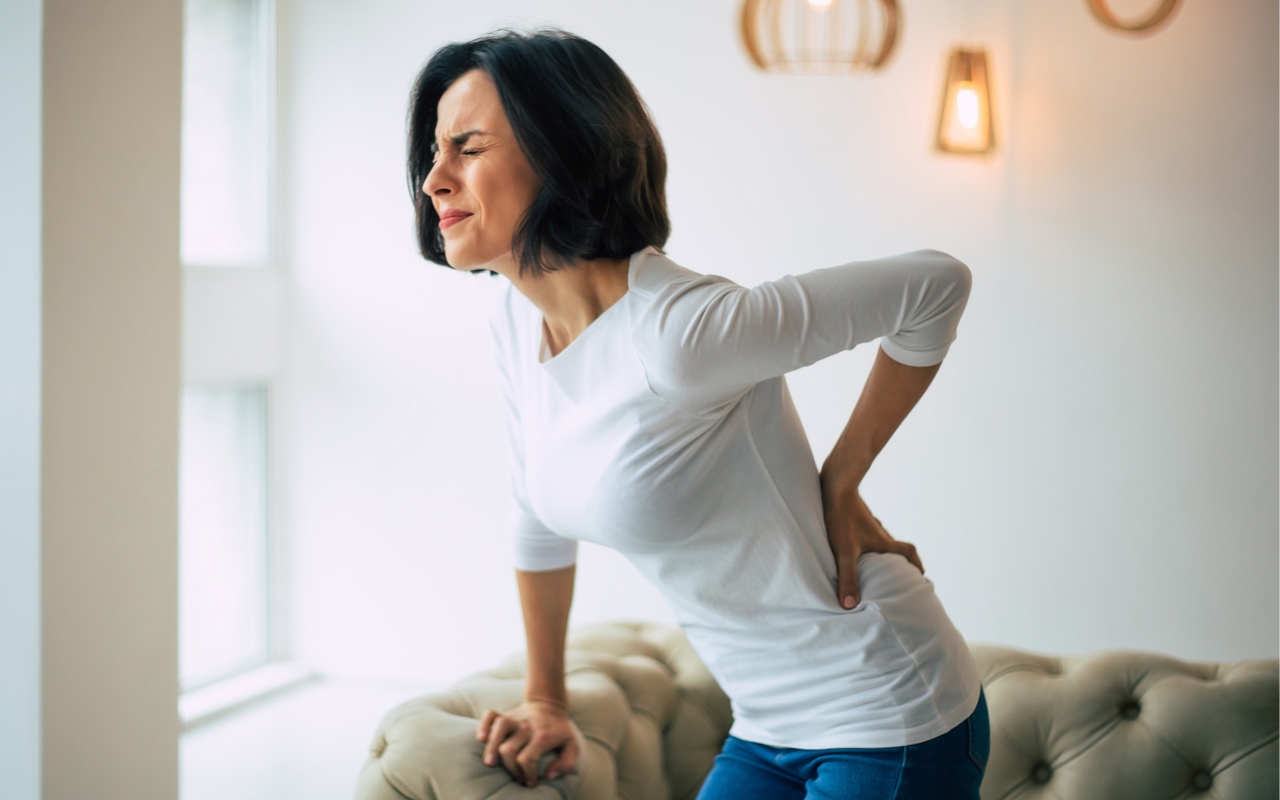Lower back pain is a common ailment affecting millions of people worldwide. Whether due to poor posture, lifestyle choices, or injuries, enduring this discomfort can be debilitating. However, practical exercises and techniques can significantly reduce and even eliminate lower back pain. This comprehensive guide will delve into various methods to alleviate lower back pain, providing a roadmap to a pain-free life.
Understanding Lower Back Pain
Before diving into the exercises and techniques to relieve lower back pain, it's essential to understand its root causes. Lower back pain can result from:
- Muscle or ligament strain: Sudden movements or lifting heavy objects improperly can strain back muscles and spinal ligaments.
- Bulging or ruptured disks: Disks act as cushions between your spine's bones (vertebrae). A bulging or ruptured disk can press on a nerve.
- Arthritis: Osteoarthritis can affect the lower back. In some cases, arthritis in the spine can lead to a narrowing of the space around the spinal cord, a condition called spinal stenosis.
- Skeletal irregularities: Conditions such as scoliosis, where your spine curves to the side, also may lead to back pain.
Understanding these causes can help tailor an appropriate exercise and treatment plan.
Effective Exercises to Relieve Lower Back Pain
1. Knee-to-Chest Stretch
The knee-to-chest stretch is a gentle way to elongate your lower back, relieving tension and pain.
- Lie on your back with your knees bent and feet flat on the floor.
- Bring one knee to your chest while keeping the other foot flat on the floor.
- Hold for 15-30 seconds, then lower your knee and repeat with the other leg.
2. Pelvic Tilts
Pelvic tilts can help engage your abdominal muscles and reduce the stiffness in your lower back.
- Lie on your back with your knees bent and feet flat on the floor.
- Tighten your stomach muscles and push your lower back into the floor.
- Hold for a few seconds, then relax.
3. Bird Dog
This exercise improves balance and strengthens your lower back, glutes, and abs.
- Start on your hands and knees.
- Extend one leg straight back while extending the opposite arm forward.
- Hold for a few seconds, then return to the starting position and switch sides.
For a visual guide and additional exercises, visit One Peloton.
The Role of Stretching in Lower Back Pain Relief
Stretching plays a vital role in maintaining flexibility and relieving tension. Here are some effective stretches:
1. Cat-Cow Stretch
This stretch improves flexibility and eases tension in the spine.
- Start on your hands and knees.
- Arch your back towards the ceiling (cat position) and hold for a few seconds.
- Dip your back towards the floor (cow position) and hold.
2. Child’s Pose
Child's Pose is a resting stretch that gently elongates your back.
- Kneel on the floor and sit back on your heels.
- Lean forward, stretching your arms in front of you with your forehead resting on the ground.
3. Seated Spinal Twist
Twisting your spine can help increase flexibility and reduce lower back pain.
- Sit with your legs extended out in front of you.
- Cross one leg over the other and twist your upper body towards the raised knee.
- Hold for 5-10 breaths and switch sides.
For more stretching routines, check out this guide from Prevention.
Strengthening Core Muscles
A strong core can support your lower back and reduce the risk of pain. It is crucial to engage in exercises that target the abdominal muscles, obliques, and lower back.
1. Planks
Planks are excellent for building core strength without putting undue stress on your lower back.
- Lie face down, then lift your body on your toes and forearms.
- Keep your body straight and hold the position for as long as possible.
2. Bridges
Bridges strengthen the glutes and lower back, providing better support for your spine.
- Lie on your back with your knees bent and feet flat on the floor.
- Lift your hips towards the ceiling while squeezing your glutes.
- Hold for a few seconds, then lower your hips back down.
3. Leg Raises
Leg raises target the lower abdominal muscles, which are often neglected.
- Lie on your back with your legs straight.
- Slowly lift your legs towards the ceiling, keeping them straight.
- Lower them back down without touching the floor and repeat.
For a detailed guide on core exercises, visit Today.
Incorporating Yoga
Yoga combines stretching and strengthening exercises that can significantly alleviate lower back pain. Here are some beneficial poses:
1. Downward-Facing Dog
This pose stretches the hamstrings, calves, and lower back.
- Start on your hands and knees.
- Lift your hips towards the ceiling, forming an inverted V-shape.
- Hold for a few breaths.
2. Pigeon Pose
Pigeon Pose stretches the hip flexors, which can help reduce lower back strain.
- Start in a plank position.
- Bring one knee towards the opposite wrist, letting the shin rest on the ground.
- Stretch your other leg straight back.
3. Triangle Pose
This pose helps stretch the sides of the body and strengthen the legs.
- Stand with your feet wide apart.
- Extend one arm towards the ceiling and the other towards the ground, bending your body sideways.
For more yoga stretches designed to ease lower back pain, visit Iowa Clinic.
Lifestyle Modifications for Long-Term Relief
1. Ergonomic Adjustments
Ensuring that your workspace is ergonomically designed can prevent lower back pain. This includes adjusting your chair, desk, and monitor to support good posture.
2. Regular Movement
Avoid sitting or standing in one position for too long. Take regular breaks to walk around and stretch.
3. Healthy Weight Management
Maintaining a healthy weight reduces the pressure on your lower back. A balanced diet and regular exercise can assist with weight management.
4. Proper Lifting Techniques
Always use your legs to lift heavy objects and avoid twisting your body. Keep the object close to your body as you lift.
When to Seek Professional Help
While exercises and lifestyle modifications can significantly reduce lower back pain, it's essential to seek professional help if:
- Pain persists for more than a few weeks: Chronic pain requires a medical evaluation.
- Symptoms worsen: Increased pain should be addressed immediately, especially if accompanied by weakness or numbness.
- Discomfort affects daily activities: If pain interferes with your routine, consult a healthcare provider.
Visiting a physical therapist can provide tailored exercises and treatments to resolve lower back pain. The Mayo Clinic offers extensive resources and tools for understanding and managing back pain.
Advanced Techniques
1. Heat and Cold Therapy
Heat can relax tight muscles, while cold therapy can reduce inflammation and numb sharp pain.
2. Massage Therapy
Regular massages can relieve muscle tension, improve circulation, and promote relaxation, which can help alleviate back pain.
3. Acupuncture
Acupuncture, an alternative treatment involving the insertion of fine needles into specific points on the body, has been shown to relieve back pain in some individuals.
4. Chiropractic Adjustments
Chiropractors perform spinal adjustments to improve alignment and reduce pain. This treatment can be beneficial for certain types of lower back pain.
Conclusion
Lower back pain, while familiar, doesn’t have to be a life-long sentence. You can significantly reduce or even eliminate lower back pain by combining targeted exercises, stretching, strengthening, and lifestyle modifications. Incorporating these strategies into your daily routine not only alleviates current discomfort but also helps prevent future occurrences. Taking control of your health through informed and proactive measures can lead to a happier, more active life.
For more in-depth information on exercises and treatments for back pain, visit reliable health resources such as AARP and NHS Inform.
Remember to listen to your body and consult with healthcare professionals if necessary. Adopting these practices can pave the way to a pain-free and healthier future.











